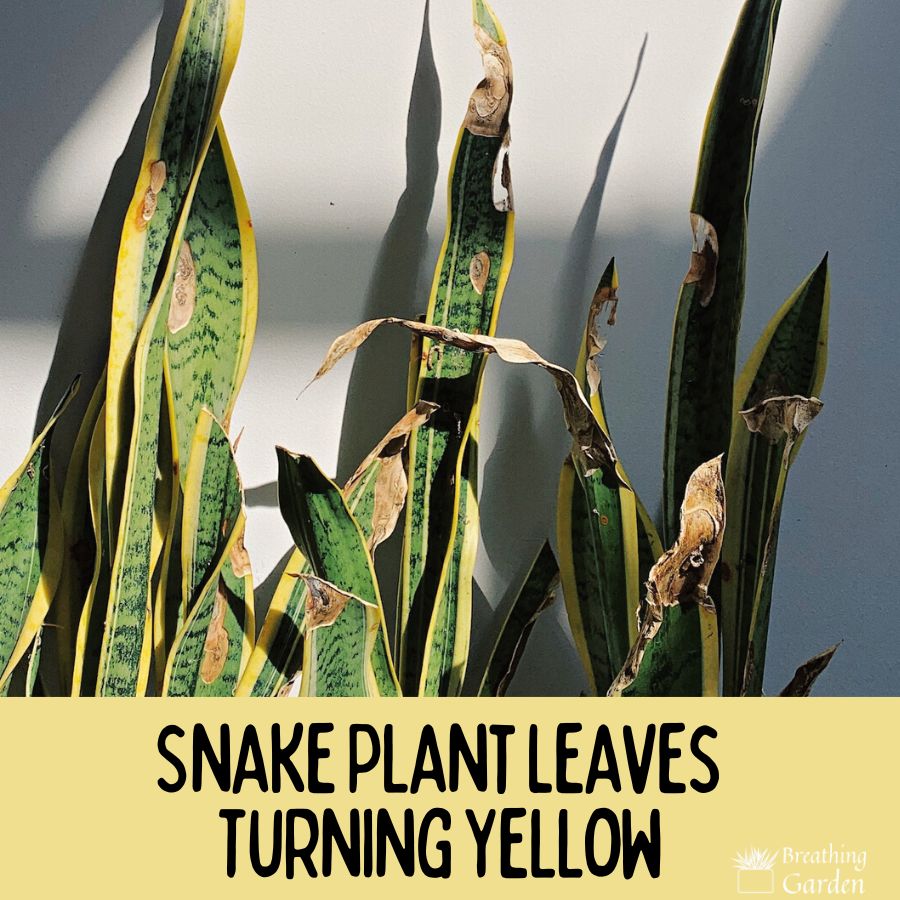Top Guidelines Of Snake Plant Leaves Turning Yellow
Wiki Article
Some Ideas on Snake Plant Leaves Turning Yellow You Need To Know
Table of ContentsAll About Snake Plant Leaves Turning YellowThe 25-Second Trick For Snake Plant Leaves Turning YellowFascination About Snake Plant Leaves Turning YellowSnake Plant Leaves Turning Yellow for DummiesNot known Details About Snake Plant Leaves Turning Yellow
Here are 7 reasons your snake plant's fallen leaves can be turning yellow and exactly how to repair it. Several various plant issues can cause yellow fallen leaves, or chlorosis. Chlorosis takes place when plants do not have the trace elements they require to create chlorophyll, which makes vegetation environment-friendly and enables plants to transform sunshine right into food.Snake plants are drought tolerant thanks to their succulent leaves. These plants grow ideal in loose, well-drained soil that's permitted to dry totally in between waterings and might only require water as soon as each month during winter. Overwatering can protect against origins from absorbing wetness and nutrients that the plant needs and can even cause origin rot.
A potbound plant can not absorb nutrients from the soil. If your snake plant is chock-full or outgrowing its pot, this may be the source of yellow leaves. An occasional yellow fallen leave is completely normal for a snake plant. As the plant ages, old leaves yellow, pass away, and hand over as they're replaced with new ones.
See to it the plant has intense, indirect light and continually warm temperatures, and water only when the soil has totally dried out. Watch out for issues and capture them at an early stage to maintain your plant looking healthy and gorgeous.
Facts About Snake Plant Leaves Turning Yellow Revealed
If the fallen leaves on your serpent plant are getting soft, it's typically an indication of too much water. Serpent plants store water in their fallen leaves and if they're overwatered, the fallen leaves can become soft and mushy. If you assume your snake plant is being overwatered, permit the soil to dry out entirely prior to sprinkling again.Yes, some yellowing is typical and to be anticipated on older fallen leaves, particularly as snake plants age. If the plant is or else healthy and the leaves are just lightly yellowed after that there is no cause for worry. However, if the fallen leaves are considerably yellowed or if there are various other indicators of distress after that it's finest to act.
Dead leaves can offer a home for parasites and conditions, which can then infect the remainder of the plant. To eliminate a dead fallen leave, just cut it off at the base with a sharp blade or scissors. Make certain to decontaminate your cutting device in between cuts to avoid the spread of condition.
In general, snake plants ought to be watered every one to 2 weeks. If you assume your serpent plant has actually been overwatered, the very first step is to quit sprinkling it.
Getting The Snake Plant Leaves Turning Yellow To Work
With a little examination, you must be able to identify the cause and take actions to deal with the issue and have a healthy snake plant.The serpent plant is a cool houseplant. The snake plant is one of those plants that are fantastic for growing inside your home in a terrarium, Snake plants can expand rather huge, however they likewise have a tendency to be rather low-maintenance.
When the dirt is overwatered, the plant cells take in more water than they can store. Read right here to Leaves ended up being soaked and yellow as they soak up extra water. Drooping serpent plant leaves are caused by soaked-up leaf cells losing their suppleness. You might observe that your serpent plant will certainly become black or brown if the yellow patches are not remedied by remedying overwatering.
It is, therefore, much more likely that your plant will certainly spot yellow spots on its fallen leaves if you overfeed it with fertilizer during wintertime. The leaves of snake plants are likewise prone to yellowing when overfed, especially if the origins are breakable. Repotting your yellowing, sprinkling just when the dirt dries, and supplying ideal temperature and light conditions can wait.
7 Simple Techniques For Snake Plant Leaves Turning Yellow

Your can be eliminated by removing the yellow check my reference tips. The pruned leaves should expand longer if they are watered correctly and have optimum light and temperature level conditions. It is essential to bear in mind that the pointed pointers will certainly not grow back, creating them to stand out from the remainder of the leaves.
It will not take wish for the leaves to regrow and grow like the healthy fallen leaves around them. At the same time, you can remove damaged leaves from the base of the plant. The shows that it's obtaining excessive or insufficient light or nutrients. The crucial message is to allow the serpent plant time to recuperate.

Top Guidelines Of Snake Plant Leaves Turning Yellow
Some of one of the most usual causes are listed here (Snake Plant Leaves site web Turning Yellow). Sansevierias like dry environments and prefer little water maintained at a space of once or twice once a week in see here summer season and monthly in wintertime. But when the water dose leaves control, your Sansevieria will certainly endure from overwatering. The most typical issue issued by overwatering is origin rot causing mushy origins and stems with a nasty scent.Report this wiki page